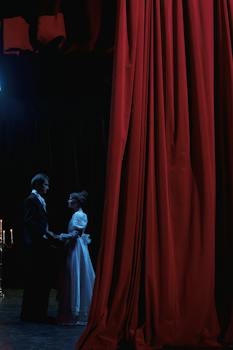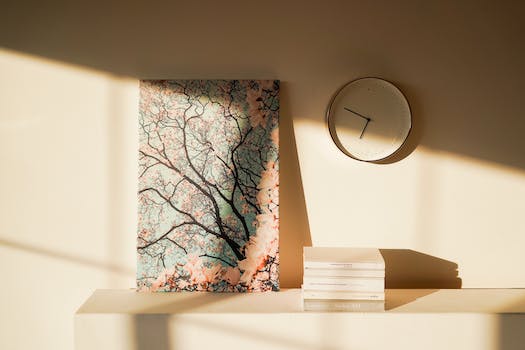

-
Table of Contents
Unveiling the artistic genius of the Tudor Matchmaker.
Introduction
The Renaissance Artist Behind the Tudor Matchmaker is a book that explores the life and works of Hans Holbein the Younger, a renowned artist of the 16th century. This book delves into Holbein's artistic achievements, particularly his portraits of the Tudor court, and sheds light on his lesser-known role as a matchmaker for the English monarchy. Through meticulous research and analysis, the author provides a comprehensive account of Holbein's contributions to both art and the political landscape of his time.
The Life and Works of the Renaissance Artist
The Renaissance period was a time of great artistic and cultural growth in Europe. It was during this time that many of the world's most famous artists emerged, creating masterpieces that still captivate audiences today. One such artist was Hans Holbein the Younger, a German painter who is best known for his portraits of the Tudor court in England.
Holbein was born in Augsburg, Germany in 1497. He came from a family of artists, and it was clear from a young age that he had a natural talent for painting. He studied under his father, Hans Holbein the Elder, and quickly developed his own unique style.
In the early 16th century, Holbein traveled to Basel, Switzerland, where he became a sought-after portrait painter. His attention to detail and ability to capture the likeness of his subjects made him a favorite among the wealthy and powerful. It was during this time that he painted some of his most famous works, including portraits of Erasmus of Rotterdam and the humanist scholar Thomas More.
In 1532, Holbein made the decision to move to England, where he would spend the rest of his life. He was invited to the court of King Henry VIII, who was known for his love of art and culture. Holbein quickly became a favorite of the king, and he was given the title of "the king's painter."
During his time at the Tudor court, Holbein painted numerous portraits of the royal family and other members of the court. His portraits were highly detailed and realistic, capturing not only the physical appearance of his subjects but also their personalities and emotions. His most famous portrait is arguably that of Henry VIII himself, which is now housed in the Louvre Museum in Paris.
In addition to his portraits, Holbein also worked on a number of other projects during his time in England. He was commissioned to design jewelry, tapestries, and even stained glass windows for various churches and cathedrals. His attention to detail and ability to work in different mediums made him a versatile and highly sought-after artist.
Despite his success, Holbein's life was not without its challenges. The political climate in England was often tumultuous, and he found himself caught in the middle of various power struggles. He also faced personal tragedy, losing his wife and two of his children to the plague.
Despite these hardships, Holbein continued to produce incredible works of art until his death in 1543. His legacy as one of the greatest artists of the Renaissance lives on, and his works continue to inspire and captivate audiences around the world.
In conclusion, Hans Holbein the Younger was a Renaissance artist who made a significant impact on the art world. His portraits of the Tudor court in England are some of the most famous and influential works of the period. His attention to detail and ability to capture the essence of his subjects set him apart from his contemporaries. Despite the challenges he faced, Holbein's legacy as a master artist endures, and his works continue to be celebrated and admired to this day.
The Influence of the Tudor Matchmaker on Renaissance Art

The Renaissance period was a time of great artistic innovation and creativity. Artists during this time were inspired by a variety of subjects, from religious themes to mythology and even everyday life. One artist who made a significant impact on Renaissance art was the Tudor Matchmaker.
The Tudor Matchmaker, also known as the Marriage of Henry VII and Elizabeth of York, was a painting created by an unknown artist during the Renaissance. This painting depicted the marriage of Henry VII, the first Tudor monarch, and Elizabeth of York, which took place in 1486. The painting was commissioned to commemorate this important event in English history.
The influence of the Tudor Matchmaker on Renaissance art can be seen in several ways. Firstly, the painting itself was a masterpiece of its time. The artist used vibrant colors and intricate details to bring the scene to life. The attention to detail in the clothing and jewelry worn by the figures in the painting was particularly impressive. This attention to detail became a hallmark of Renaissance art and was emulated by many other artists of the time.
Secondly, the Tudor Matchmaker had a significant impact on the portrayal of women in Renaissance art. Elizabeth of York, the bride in the painting, was depicted as a beautiful and regal figure. This portrayal of women as powerful and influential was a departure from the traditional depiction of women as passive and submissive. Other artists began to follow suit and started portraying women in a more empowered and independent manner.
Furthermore, the Tudor Matchmaker also influenced the subject matter of Renaissance art. Prior to this painting, most art focused on religious themes or classical mythology. However, the Tudor Matchmaker introduced the idea of depicting historical events and real-life figures in art. This opened up a whole new world of possibilities for artists, who began to explore different historical events and figures in their work.
The influence of the Tudor Matchmaker can also be seen in the techniques used by Renaissance artists. The artist behind the painting employed a technique known as sfumato, which involves the use of subtle gradations of color and tone to create a soft and hazy effect. This technique was widely adopted by other artists during the Renaissance and became a defining characteristic of the period.
In conclusion, the Tudor Matchmaker had a profound influence on Renaissance art. Its attention to detail, portrayal of women, subject matter, and techniques all contributed to the development of the art of the time. The painting served as a catalyst for change in the art world, inspiring other artists to explore new themes and techniques. The Renaissance period was a time of great artistic growth and innovation, and the Tudor Matchmaker played a significant role in shaping the art of the time.
Uncovering the Secrets of the Renaissance Artist's Techniques
The Renaissance period was a time of great artistic innovation and creativity. Artists during this time sought to push the boundaries of what was possible in their craft, experimenting with new techniques and styles. One such artist who made a significant impact during this period was Hans Holbein the Younger, the mastermind behind the famous Tudor Matchmaker painting.
Holbein was born in Germany in 1497 and quickly gained recognition for his exceptional talent as a painter. He was known for his attention to detail and his ability to capture the essence of his subjects. His work was highly sought after, and he was commissioned by many prominent figures of the time, including King Henry VIII of England.
The Tudor Matchmaker is one of Holbein's most famous works. It depicts a scene from the court of Henry VIII, showing the king and his advisors discussing potential marriage alliances. The painting is rich in detail, with each figure meticulously rendered and the background filled with intricate patterns and textures. It is a testament to Holbein's skill as an artist and his ability to capture the complexity of the political and social dynamics of the time.
One of the secrets behind Holbein's technique was his use of a grid system. He would divide his canvas into a grid of squares and then transfer the image from his preliminary sketches onto the larger canvas using this grid as a guide. This allowed him to accurately capture the proportions and details of his subjects. It was a time-consuming process, but it ensured that his final paintings were incredibly lifelike and realistic.
Another technique that Holbein employed was the use of glazes. He would build up layers of transparent paint to create depth and luminosity in his paintings. This technique gave his works a sense of depth and richness that was unmatched by his contemporaries. It also allowed him to create subtle variations in color and tone, adding to the overall realism of his paintings.
Holbein was also a master of portraiture. He had a keen eye for capturing the likeness and personality of his subjects, and his portraits are known for their psychological depth. He would spend hours studying his subjects, observing their mannerisms and expressions, in order to create a true likeness. His portraits were not just representations of physical appearance; they were windows into the souls of his subjects.
In addition to his technical skill, Holbein was also a master storyteller. His paintings often conveyed a narrative, telling a story through the arrangement of figures and the use of symbolism. The Tudor Matchmaker, for example, tells the story of the political maneuvering and power struggles of the Tudor court. Each figure in the painting represents a different faction or interest, and their interactions reveal the complex web of alliances and rivalries that characterized the court.
In conclusion, Hans Holbein the Younger was a true master of his craft. His innovative techniques and attention to detail set him apart from his contemporaries and made him one of the most celebrated artists of the Renaissance period. His ability to capture the essence of his subjects and tell a story through his paintings is what makes his work so enduring and captivating. The Tudor Matchmaker is just one example of his genius, and it continues to fascinate and inspire art lovers to this day.
Q&A
1. Who was the Renaissance artist behind The Tudor Matchmaker?
The Renaissance artist behind The Tudor Matchmaker was Hans Holbein the Younger.
2. When was The Tudor Matchmaker created?
The Tudor Matchmaker was created during the Renaissance period, specifically in the early 16th century.
3. What is The Tudor Matchmaker?
The Tudor Matchmaker is a famous portrait painting created by Hans Holbein the Younger.
Conclusion
In conclusion, "The Renaissance Artist Behind the Tudor Matchmaker" sheds light on the life and work of Hans Holbein the Younger, a prominent artist of the Renaissance period. The book explores Holbein's role as a portraitist and his significant contributions to the Tudor court, particularly his involvement in arranging marriages for King Henry VIII. Through detailed analysis and historical context, the author highlights Holbein's artistic talent and his impact on the political and social dynamics of the time. Overall, this book provides valuable insights into the life and career of a renowned Renaissance artist and his influence on the Tudor era.












